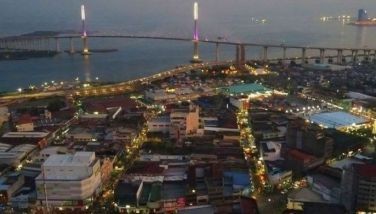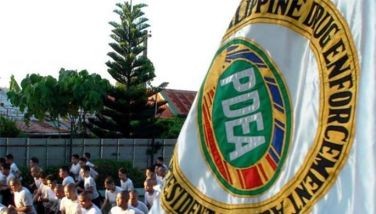It’s a venue to know Cebu more - Youth
CEBU, Philippines - On its 10th year, the annual Gabii sa Kabilin successfully gathered thousands of local and foreign tourists, including the younger generation who acknowledged the activity's importance in knowing more about Cebu's rich culture and history.
Chanel Gayle Delos Reyes, 15, a first-time participant, said her experience made her see Cebu's history in a more different and bigger picture.
"It helps us appreciate more of Cebu and its history and I think in the near future, I would like to know more of the city. It gives us more time to appreciate what we have because our culture is unique and different from theirs," said Delos Reyes, who hopped from one site to the other with her family.
Although delos Reyes admitted that her interest in history and culture is not that deep, curiosity moved her to join the activity this year.
"It's interesting. It depicts Cebu in one picture. It shows the history of Cebu even though you were not around during the past but you can see just through the monument," she described the Plaza Parian-AboitizLand, one of the stops during the five-hour tour.
AboitizLand, for several years now, has organized cultural and heritage acti-vities on the site during the Gabii sa Kabilin as part of its corporate social responsibility.
Spearheaded in 1996 by then Mayor Alvin Garcia and national artist Edgardo Castrillo, the plaza shows the significant events in Cebu, from the time of Rajah Humabon to the recent canonization of Pedro Calungsod.
"Somehow I have learned about history deeper than what school has been teaching me so far. It has become a living proof of what had been the ideas that teachers had presented to us. It made me become more connected to my history and now, I want to see more of what Cebu has to offer," said Delos Reyes.
With her experience from the Gabii sa Kabilin, she shared that visiting the heritage sites helped her to be more connected with Cebu's history.
"It somewhat made me more complete. I felt I have found what I have been missing on our history," she said.
For 16-year-old Stacie Evanne Cayanong, who also participated in the event for the first time, the experience during the tour made her want to know more about Cebu's culture and religion.
"Tonight, I definitely fell in love with Cebu. I feel like I've just been here, I feel like a tourist. The experience made me more exposed to the local talents and heritage sites of Cebu," said Cayanong, who is raised and grew in Cebu City.
Her experience on her visit to the Archdiocesan Museum of Cebu made her interested in Cebu's culture and religion.
The Archdiocesan Museum of Cebu is considered a museum piece as it is a fine example of the architectural structure called "bahay-na-bato." After surviving World War II, it has gone through many transformations, as a convent for the priests and a campus of the University of San Carlos, before it became the museum that we know of today.
"It's interesting. I've never seen the things here before. I've never been into this place as I was just influenced by my friend. Now that I have seen them, I am interested and I am learning a lot more about Cebu and its history and religion," said Cayanong.
Cayanong admitted that while she is a Roman Catholic, she is not religious, but her experience moved her to discover more her religion.
"Seeing these things, I want to know more about our religion even if I have not been that religious. Being a 20th century person and since my family has not been exposing me to these stuff, now I am trying to learn of our culture and our religion knowing that Cebu is the cradle of Christianity," she said.
"I have really seen talents and amazing things that Cebuano can do. Though I know more of the Western stuff but this time, I'll try to learn more of our own heritage. Character wise, it made me more nationalistic and talking about religion, this experience has uplifted the moral aspect of my life," she added.
This year is the 10th run of the Gabii sa Kabilin focusing on the theme, "Forging Peoples." Starting with three museums in 2007, the Gabii sa Kabilin now has 41 participating and featured sites in four key cities: Cebu, Mandaue, Lapu-Lapu, and Talisay.
Among the participating sites in Cebu City was the Jose R. Gullas Halad Museum where locals and foreign tourists were entertained with cultural presentations, exhibits and local delicacies.
Founded by Jose "Dodong" Gullas in 2010, the music-oriented museum displays the talents and skills of Cebuano musicians and artists.
With exhibits of local composers and artists, paintings, musical instruments, awards and certificates and original musical sheets, the museum shows the Cebuano heritage and lifestyle through music. (FREEMAN)
- Latest
























